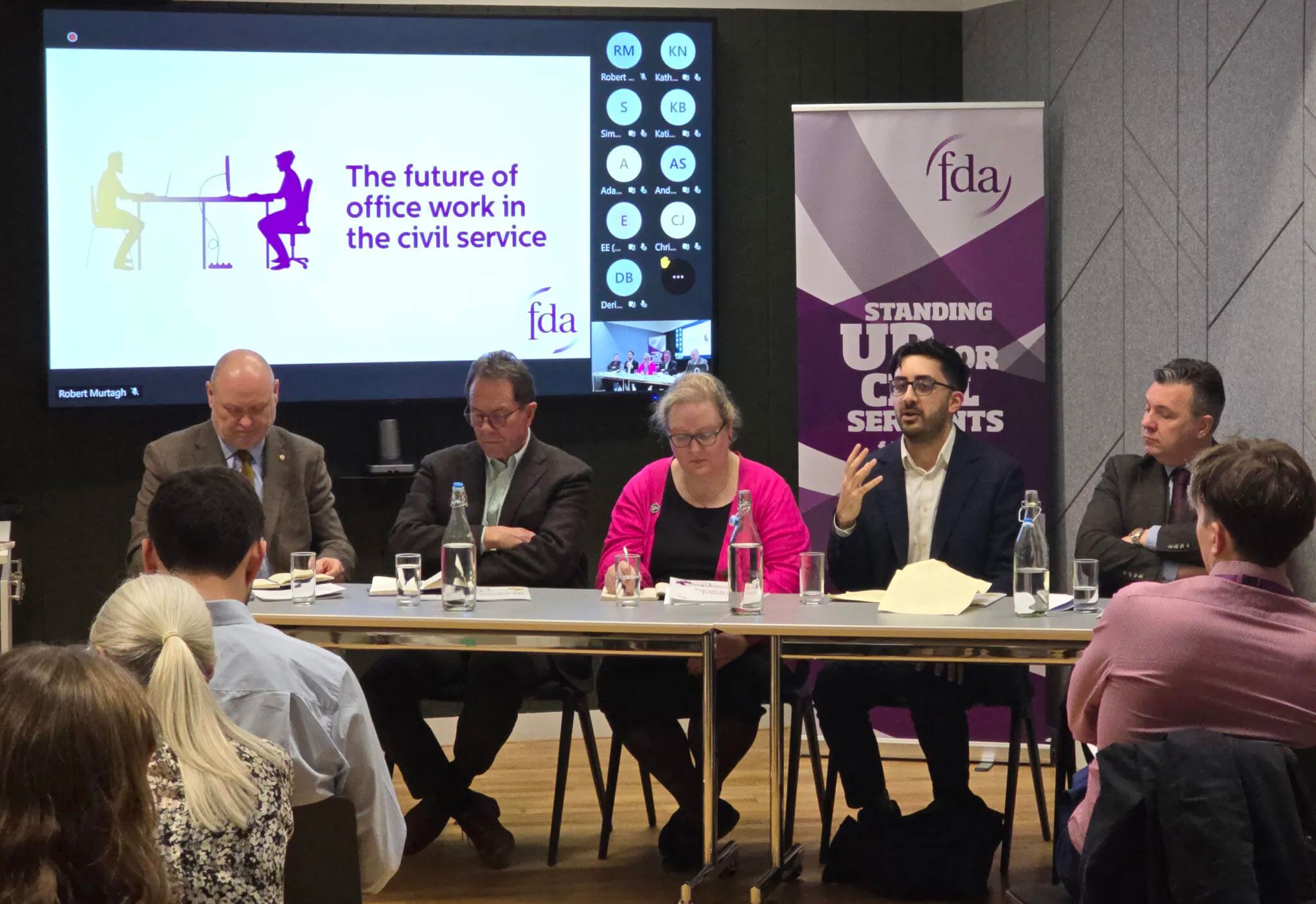Location, relocation and dislocation

The government hubs programme is well and truly underway, with the first ‘hub’, located in Croydon, opening its doors this past summer.
The government’s ambitious estates strategy aims to shrink the number of government buildings from 800 to 200 by 2023, consolidating the workforce into large shared buildings or campuses across the UK, which will eventually house multiple government departments.
HM Revenue and Customs (HMRC) is currently leading this process and will see its 170 regional offices consolidated into 13 hubs by 2021. At the time of writing, leases had already been signed for hubs in Croydon, Belfast, Edinburgh, Birmingham, Liverpool, Leeds, Bristol, Newcastle and Cardiff, with deals for offices in Glasgow, Nottingham, Manchester and Stratford in East London yet to be finalised.
Speaking candidly to the Public Accounts Committee on 6 November, HMRC Permanent Secretary Jon Thompson acknowledged that HMRC needs to do “further work with staff to recognise the benefits of the regionalisation programme”.
For Jeremy Carr-Smith, founder of Help Moving Office, a specialist online resource for office relocation planning, good communication is “absolutely critical” to any successful office move, no matter how large or small. He claims this is especially true for the government hubs programme, as “it’s out there in the public domain”.
Carr-Smith believes that people are often more concerned about “the prospect of change rather than the reality of change” and the best way to overcome this is to regularly communicate with consistent, positive messages. He also stresses that this should be done at every managerial level, not just from the top down.
This view is echoed by Kevin White, former Director General of HR in the Home Office, who says: “Any programme of change is going to be more effective if the people who are being changed feel they understand it and, even if they may not like it, feel like they have a chance to express their views.”
According to White, managers often underestimate the extent to which they need to keep communicating with people on difficult change projects.
“I think it’s quite helpful to have a reminder that regular and engaged communication is really important, particularly if you’re dealing with uncertainties,” he says. “It can’t just be put down on paper and sent out; it actually needs to be delivered through leaders talking, managers talking to staff, listening to staff and helping them to learn in a process of discussion rather than through reading bulletins.”
But White admits that there are sometimes limits to how open managers can be. “You can’t always give people the information they would like to have,” he explains. “Sometimes it’s known but can’t be presented for commercial or other sorts of reasons. Sometimes you don’t know… But that’s not a reason for not communicating as much as you can. and telling people what you don’t know, why you don’t know it and when you’re likely to know.”
One of the key benefits of the hubs programme to government is, of course, saving money. But civil service Chief Executive John Manzoni has emphasised that the programme must also provide benefits for workers, and allow the civil service to take advantage of advances in technology to allow greater collaboration and give civil servants “more power over how and when they work” – something he has described as an “integral part” of the strategy.
“Office moves can be a great trigger for changing working practices, but have to be accompanied by training.”
– Jeremy Carr-Smith, founder of Help Moving Office
The Association of Revenue and Customs (ARC), the FDA section representing senior HMRC staff, has for the last two years been actively involved in supporting members who will be affected.
ARC President Vicky Johnson, who has some first-hand experience of the new Croydon hub, says: “The whole thrust of the regional centres is getting people away from thinking they’ve got to have a desk to do the work that they’re doing. You’re supposed to decide what your work is that day, and if you need a desk to do it you need to find one. If you don’t need a desk then you will be encouraged to use the other available facilities.
“There are collaboration zones, quiet zones where there are no phones, and rooms for telephone calls,” she adds. “In some places, these changes are not landing well but they are fundamental to the success of the relocation strategy.”
The HMRC programme is supposed to fit in with wider changes in civil service working practices that focus on ‘smart working’, and the new hubs are being built from the ground up with this in mind. According to Carr-Smith, “an office move is always a great trigger for management to incorporate change in working practices”, but this “has to be accompanied with a training programme”.
“The worst-case scenario is moving into an office where nothing works,” he says; but even when new systems are up and running, if staff aren’t comfortable with them, this can be “just as bad”. In order to fully reap the productivity gains of a new office environment, Carr-Smith advocates focused training programmes for even the smallest changes, such as how to use new audio-visual and phone equipment. This “induction process”, as Carr-Smith describes it, should start well before the move-in date to limit any further obstructions or delays to people’s day-to-day work.
Johnson agrees that open communication, and a focus on proactive support and training, is essential to putting people “at the heart” of a relocation strategy. However, the inevitable fall-out from any big programme is that some people will not be able to move to the new locations. HMRC’s office moves alone will affect 38,000 of its 58,600 staff, resulting in 5,000 redundancies, and Johnson is concerned that the department has lost thousands of years of experience in just one round of office closures.
ARC has worked tirelessly to win some concessions to ensure members get the support they need to relocate – such as more freedom to work from home where possible and changes to the method of calculating Daily Travel Assistance (DTA). However, this allowance is taxable and will only last for three years for most staff. If the current approach to civil service pay progression doesn’t change, Johnson is concerned people simply “won’t be able to afford” the commute when the assistance ends.
If not properly managed, the escalation of commuting costs and times could store up retention issues in the future, but Kevin White believes that hubs can also work to unlock greater opportunities for career progression in the longer term.
“One of the things that’s best for people in the hubs is that… the more you bring together organisations, and the more senior roles, regional roles and local roles in organisations together, the more you create a viable career structure for people who want to make progress but can’t afford to move,” he argues.
But White suggests this will be much harder to achieve without increased transparency and common terms and conditions across departments.
“You need to look at each of these hubs as a common employment area and do what you ought to be doing in order to give people opportunities to move around it,” he says. “One of the things that will make that easier to manage is reducing differences in terms and conditions and pay… the people leading these hubs should take whatever opportunities they can to reduce the divergence.”
Related News
-

Under significant pressure: Interview with Director of Public Prosecutions
Tom Nathan speaks to Crown Prosecution Service Director of Public Prosecutions Stephen Parkinson about CPS’s handling of riots, the importance of impartiality and his plan to help reduce unmanageable prosecutor caseloads.
-

Changing the culture
HM Chief Inspector Sir Martyn Oliver sat down for an ‘in conversation’ event with FDA General Secretary Dave Penman, discussing the pace of change in Ofsted, challenging perceptions and tackling the long hours culture in Education.
-

Hybrid working: Led by evidence, not headlines
Tom Nathan shares the findings and recommendations of the FDA’s recent report on ‘The future of office working in the civil service’.